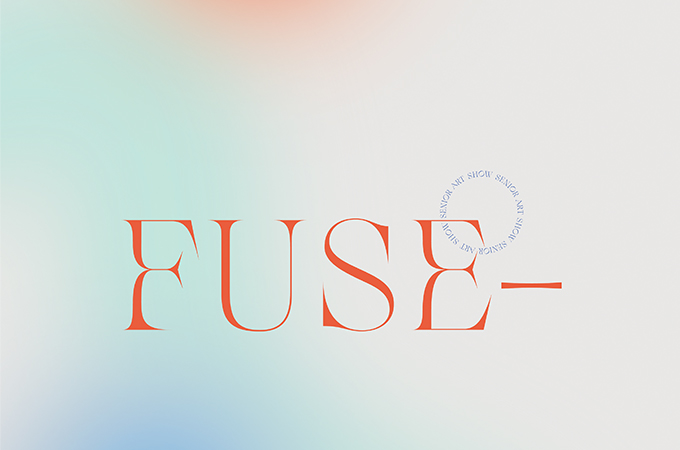At the beginning of the COVID-19 pandemic, seniors in the University of Redlands art program were sent home in the middle of preparations for their senior art show, the final exhibit of their undergraduate careers toward which they work all year. This year, students were advised to expect an online show, and, while the circumstances aren’t ideal, the process has offered unanticipated opportunities.
“Because we knew the show was going to be online, the end goal has shifted and changed the way people work—as artists, we have more flexibility,” says Greta Jursch ’21, an art major focusing on graphic design.
Professors Penny McElroy and Munro Galloway split the cohort of 18 students—who have all chosen concentrations in painting, drawing, ceramics, or graphic design—into three committees in order to prepare for the show. Jursch sits on the exhibition committee, whose members have been working to coordinate the show’s online presence. A catalog committee is designing a physical book of images of the pieces to be featured, and the publicity team is working to advertise the event.
Last year, when McElroy was on sabbatical as the pandemic was taking hold, Galloway remembers having to quickly pivot to an online show, which included panicked conversations with students who, in addition to having to retool their final projects, were in the midst of securing transportation and housing. This year, the Art Department worked hard to establish a better infrastructure for online courses and exhibits, including developing new syllabi and trying out different project management and video conference software.
“So, this year, it has hopefully been a much better experience for the students, given the limited conditions we have,” says Galloway. “The catalog is a new innovation, and the online exhibition is something we'll continue to do in the future. The exhibition catalog was a good document for students last year because they graduated with a concrete thing representative of their work. That's something we've chosen to continue as an aspect of the senior project.”
The students chose to title the show Fuse, which carries personal meaning for each participant. For Jursch, it captures the essence of a unique group of students from many different backgrounds and mediums coming together under uncommon circumstances. Art often summarizes the time in which it was made, and the circumstances of the past year have influenced the content of the show.
“Peoples’ work is more introspective than it would have been in a regular academic year,” says Jursch, noting that students were beginning to think about their final projects during the social isolation of a widespread lockdown. “We’ve had time alone to consider the direction of our work and have been involved in activism and other social causes.”
Jursch’s final project is just one example of many in the cohort—she has spent the semester designing user interfaces for three apps. One helps users find and reserve spots at campgrounds; another re-envisions the interfaces of electric vehicles and charging stations; the third is a safety tool that alerts third parties of the user’s whereabouts if necessary. All three, she says, were born out of needs she saw in her daily life and her realization that the tools she had could be improved.
While graphic designers have been working digitally for years, students who are studying a more physical medium, such as ceramics or painting, have been learning to capture images of their work for the virtual show and catalog. This evolution, McElroy notes, is only natural, due to the nature of the internet.
“There's an increasing awareness of the world in which artwork gets shared, even though, most the time, we don't make it in the digital world—but it does get shared there,” she says. “That presents particular challenges depending on your method of work. You want to physically see a painting or examine the quality of a ceramic pot by picking it up. Students have been pushed into this world professional artists were already in.”
This idea, of preparing students to be professional artists, is a core tenet of the department—preserving traditional methods while also encouraging innovative practices. Professors often host career talks with artists, allowing students glimpses into what post-graduation life might look like, and guide students through decisions to pursue graduate programs if they’re interested. In addition to leaving the program with a new set of skills, Jursch and her classmates participated in mock interviews and redesigned their resumes and portfolio websites.
This time to streamline her creative voice, Jursch says, has been invaluable, and in a strange way the pandemic has made her a better artist. “As a graphic designer, part of your job is being able to communicate visually,” she says. “That’s something I didn’t necessarily practice as much when I was working with people in-person. My visual vocabulary and ability to express what my work is about have improved dramatically, which will definitely help me in the future.”
Visit the senior art show website or learn more about studying art at the University of Redlands.






